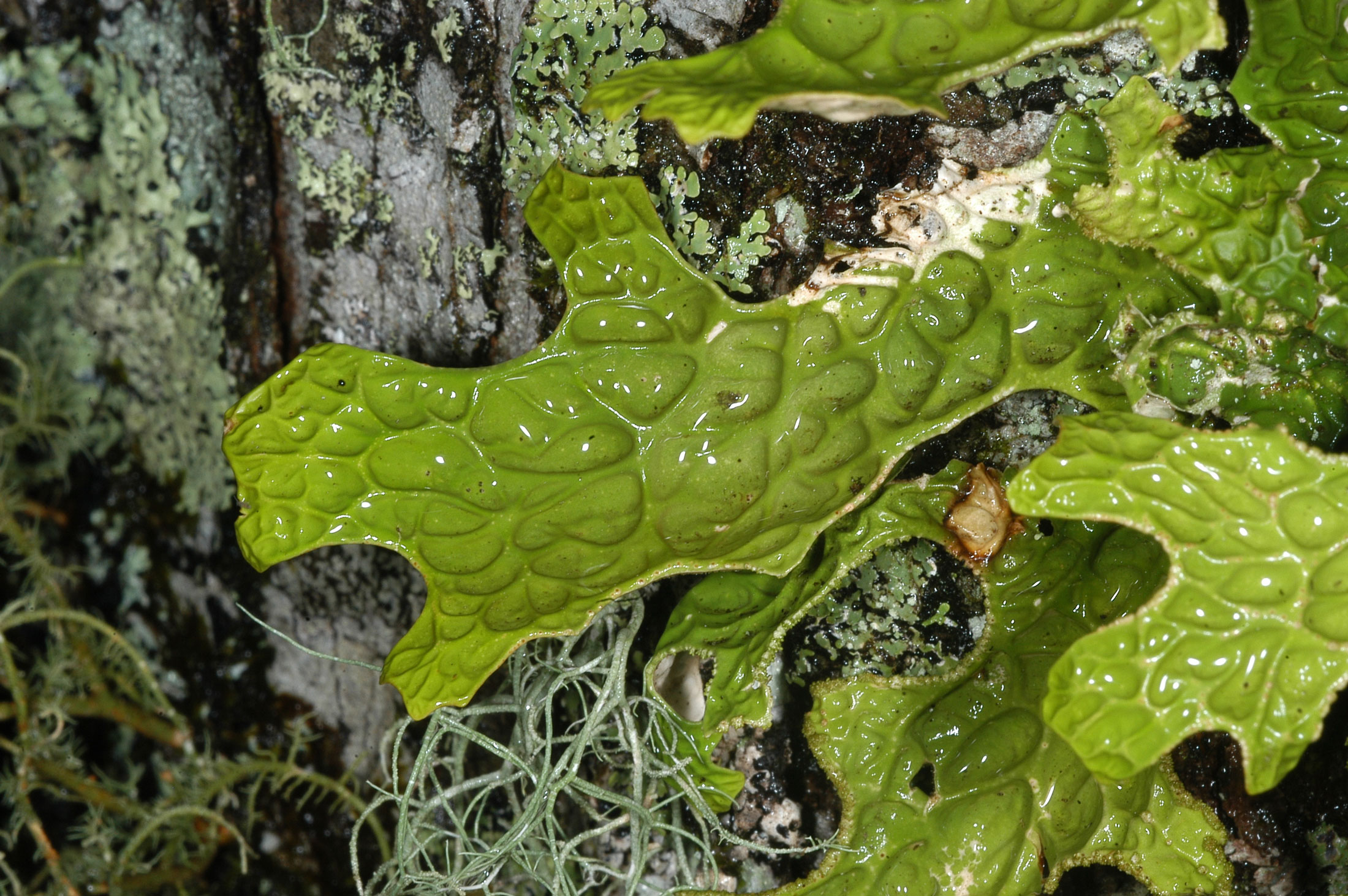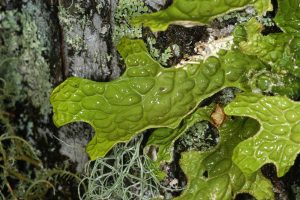
When visitors come to explore Great Smoky Mountains National Park, they have access to a wealth of knowledge highlighting the diversity of plants, animals, and ecosystems found in this special place. Among them are lichens—a lesser-known group of species whose members were largely undiscovered as recently as two decades ago. Since then, the Smokies have grown into a hub of lichen discovery and documentation, with the number of species in the park nearly tripling from 340 to 965.

Created by a mutually beneficial relationship between fungus and either algae or cyanobacteria, lichens are complex organisms, with no two being exactly the same. The fungus makes up the primary lichen structure that grows on trees, rocks, or the ground. The secondary organism, either algae or cyanobacteria, provides food for the fungus via photosynthesis, allowing the lichen to grow. With their unique composition, lichens can display a wide variety of forms and colors.
Yet few scientists study them. James Lendemer, a leading lichenologist and coauthor of Field Guide to the Lichens of Great Smoky Mountains National Park who serves as curator of botany at the New York State Museum, pointed out that research often focuses on larger, more noticeable species.
“All these little things are super diverse, and we know comparatively little about them,” he explained. “The lichens are really unusual because they’re visually large enough and conspicuous enough that the average person can see them. They are one of the last frontiers of things we can study that are visible to the naked eye, and yet, they are poorly documented.”

Although more research is still needed to fully understand the roles lichens play in the environment, data collected so far shows that they fulfill crucial roles within their respective ecosystems. In fact, they can do a little bit of everything. One of lichens’ most important functions is their role in sequestering and cycling nitrogen, a vital nutrient for all manner of living things. Lichens absorb and hold nitrogen while they are alive, and some species fix it into a form other organisms can use. When lichens die, they fall to the ground and rot, releasing nitrogen that is sent back into the atmosphere or absorbed by other living things.
Additionally, lichens help regulate temperature and humidity by soaking up any water near them and then slowly releasing it back into the environment. They can also be very sensitive and susceptible to certain conditions such as the presence of air pollution, which makes them early indicators of many environmental issues. Lichens also serve a more individualized purpose, with animals using them for nourishment, nesting material, and even housing.
Only within the last two decades has lichen research grown significantly, due largely to the work of a few dedicated lichenologists. One of these researchers, Erin Tripp, associate professor and curator of botany at the University of Colorado Boulder, pointed to one of the main reasons lichens were understudied: “The answer is, in my opinion, a lack of literature.”

For a long time, there were very few resources available for studying lichens. In fact, almost no identification keys or field guides existed. Lichenologists often had no choice but to comb through old scientific papers, looking for clues to identify the specimen before them. Little else could provide them with the information they needed.
Today, this is often still the case, though some newer pieces of literature are making identification easier in a few specific regions. These include Field Guide to the Lichens of Great Smoky Mountains National Park by Tripp and Lendemer, as well as Lichen Flora of the Greater Sonoran Desert Region, which has two volumes, and Macrolichens of the Pacific Northwest.
The work done by lichenologists like Lendemer and Tripp has helped to pave the way for future research, ensuring more information is available and that pathways for this field of study are not as limited as they once were. This new accessibility is essential in helping others learn about lichens and understand the important roles that these species play in the ecosystem. Despite long-standing obstacles to research and documentation, lichens are surprisingly easy to research—often requiring nothing more than a small sample dried and placed in a plastic bag.

But why has the Smokies become such a hotspot for studying lichens? The answer lies both in the park’s natural diversity of lichen species and the efforts of Discover Life in America, an official partner of Great Smoky Mountains National Park. DLiA is best known for coordinating the Smokies All Taxa Biodiversity Inventory, which aims to document every species in the park through the work of scientists and contributions from park visitors. Since DLiA’s inception in 1998, the number of species recorded in the park has more than doubled from 10,363 to 22,744.
“The Smokies region is a temperate rainforest with an abundance of trees and geological diversity,” said Will Kuhn, director of science and research for DLiA. ”We’re in lichen heaven! The age of the Great Smoky Mountains is probably also a big contributor, giving evolution plenty of time to work its millennia-spanning magic on lichens here.”
The park “functions as a big refuge for a lot of species,” Lendemer said. Over the years, many forest ecosystems in North America have been disrupted and altered—primarily due to human activity—disturbing the areas where lichens would otherwise thrive.

However, Great Smoky Mountains National Park stands out as an area with some of the largest and most intact forests in the eastern United States. Even the heavy logging that took place in the early 1900s wasn’t as destructive as the disruption other regions suffered, because the mountains’ rugged terrain kept logging companies from reaching certain stands of trees. This history, combined with the high level of protection that this park receives today, allows lichens to flourish, and the park’s vast size and elevation gradient offer a wide variety of habitats and environments, making it an ideal place for studying these previously overlooked organisms.
In the years to come, these discoveries are only expected to continue.
“We’re still in the phase of biodiversity discoveries with lichens that we have been long past with other groups,” said Tripp. “It has taken us a little bit longer to create momentum, but we’re coming around. It’s a glorious time to be thinking about these organisms and to learn a lot more about how incredibly diverse they are even on just an individual level.”
Subscribe to get the latest posts sent to your email.
The Great Smokies Welcome Center is located on U.S. 321 in Townsend, TN, 2 miles from the west entrance to Great Smoky Mountains National Park. Visitors can get information about things to see and do in and around the national park and shop from a wide selection of books, gifts, and other Smokies merchandise. Daily, weekly, and annual parking tags for the national park are also available.